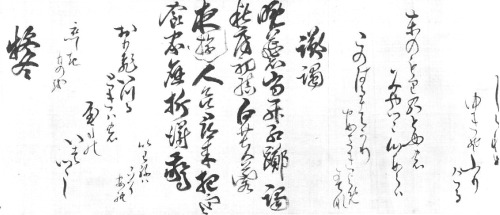#the adjustments made were very minor
“Calligraphy in Various Scripts”
Sasaki Shougen
Handscroll, ink on silk
Late 17th-early 18th century
“A common practice of professional calligraphers during the Edo period was to demonstrate the range of their skills by writing out texts or poems in different scripts sequentially in a single handscroll….This handscroll by Shougen…exhibits a full spectrum of both Chinese and Japenese styles of calligraphy. Included are Chinese poems and prose passages written in bold running script (gyousho), regular script (kaisho), clerical script (reisho), and seal script (tensho); these were alternated with waka inscribed in the Japanese syllabary known as kana. After several sections of poems, Shougen added a biography of T'ao Yuan Ming, a sign of her great respect for the Chinese poet….
The end of the scroll contains some of the most extraordinary passages. The climax is two Chinese poems; the first written in clerical script, and the second in an ornamental form of seal script called "bird” script, in which the characters are wonderfully pictorial. These final two verses read:
Spring waters fill the four valleys,
Summer clouds envelop the strange pinnacles,
The autumn moon raises its bright radiance,
Winter peaks dominate the lone pines.
Deer Cries
Yu, yu, cry the deer
Grazing in the fields.
I have an honored guest;
We strum the zither, blow the panpipes,
Blow the panpipes, trill the reeds.
Take up the basket of offerings–
Here is a man who cares for me
And will teach me the ways of Chou.“
-Source: Japanese Women Artists 1600-1900, Patricia Fister. Harper & Row Publishers, Inc. 1988
Post link




